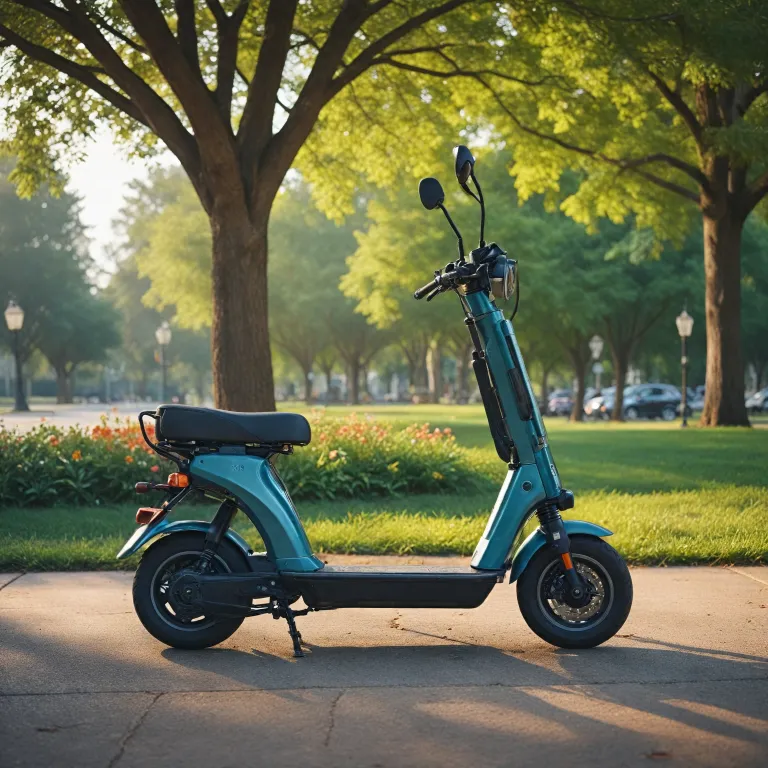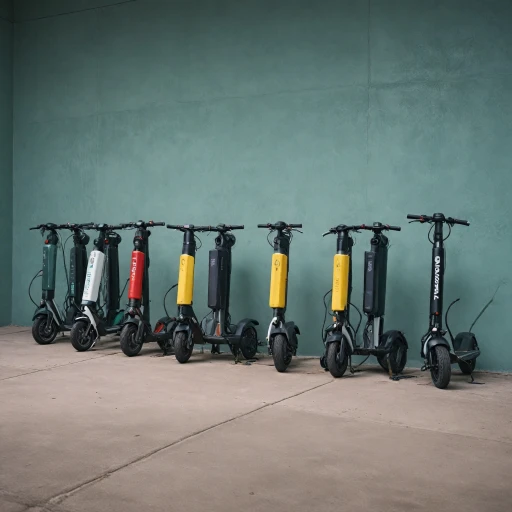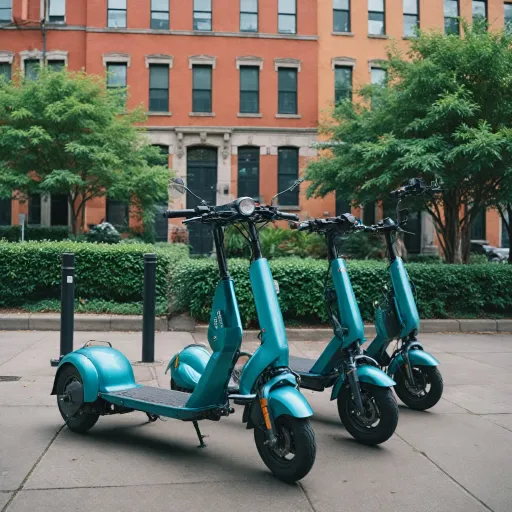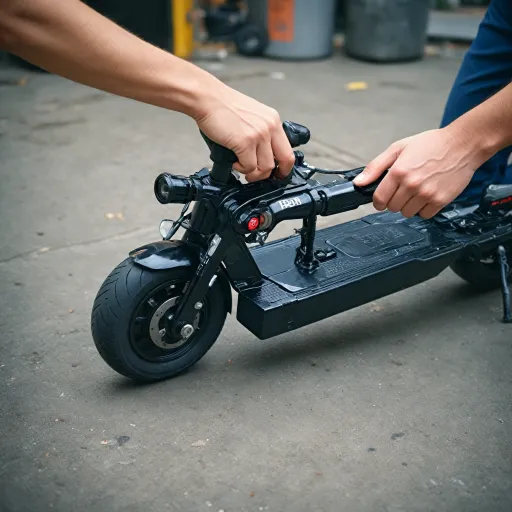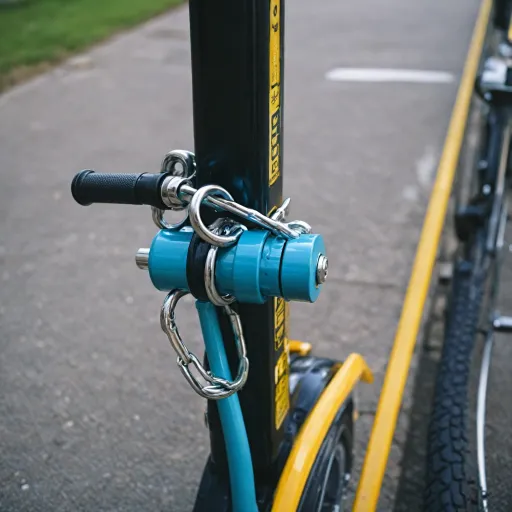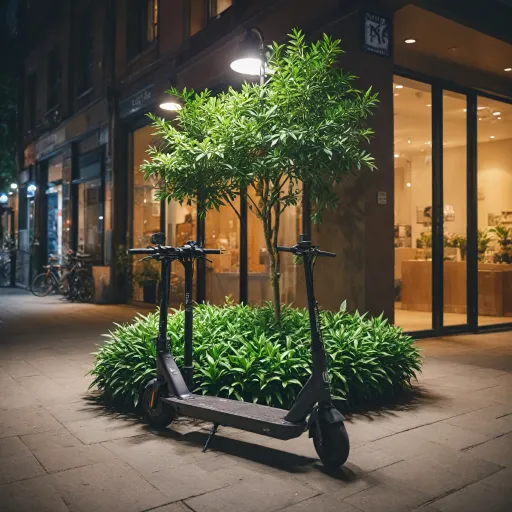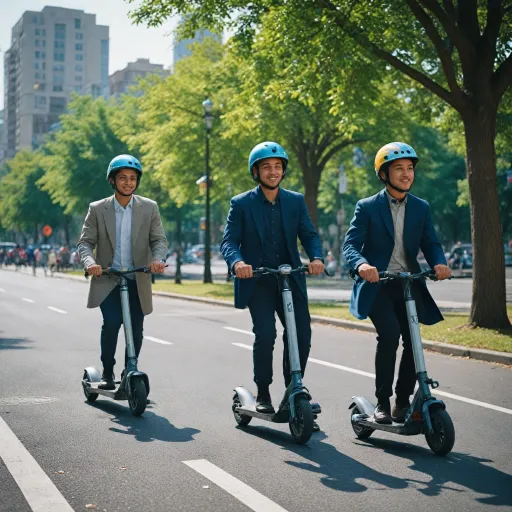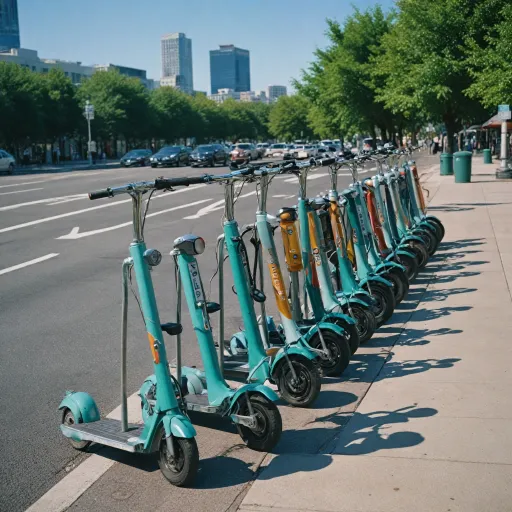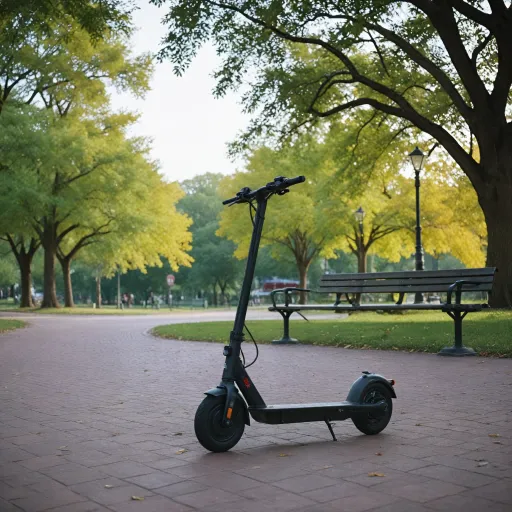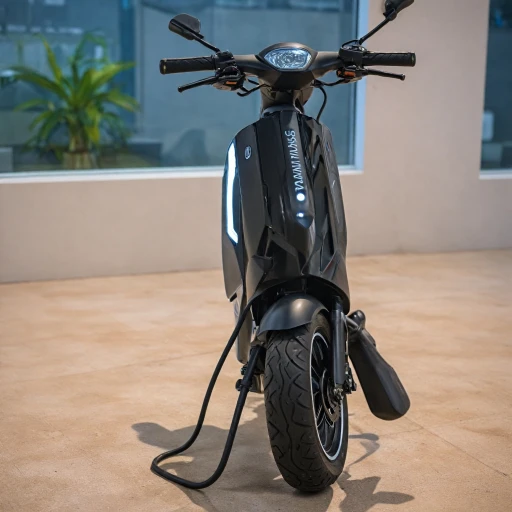
The Role of Batteries in Mobility Scooters
The Heart of Mobility: Essential Battery Components
Mobility scooters have transformed the way individuals with limited mobility move around, granting them the freedom and independence that was previously challenging. At the core of these scooters lies their battery, the essential component that dictates how efficiently and effectively they operate. Understanding the essentials of replacing your electric scooter battery can make a significant difference in performance and longevity.
Scooter batteries are responsible for powering every movement, from smooth accelerations to navigating inclines. They are the silent workhorses that demand careful consideration when it comes to price, type, and maintenance. Factors such as total capacity, lifespan, and compatibility with the scooter model can heavily influence how a battery is selected and managed.
To optimize performance, one needs to consider both the original price and the current price when purchasing or replacing a battery product. The balance between cost-effectiveness and quality often defines customer satisfaction, as unreliable batteries can lead to increased maintenance costs and downtime.
With multiple types of batteries available, including lead acid, sealed lead acid (SLA), and the more modern LiFePO options, each comes with its own set of benefits and considerations. It's crucial to view the full details of each option to make an informed decision that aligns with the specific needs of the scooter and the user.
Moreover, ongoing advancements in battery technology continue to promise improved capacity and sustainability, promising a future where mobility scooters are even more reliable and affordable. These innovations are providing better energy solutions to save costs, offering longer warranties such as year free, and supporting the current and future demands of power wheelchairs and mobility scooters.
Types of Mobility Scooter Batteries
Exploring Different Battery Technologies
Navigating the world of mobility scooter batteries can seem daunting, given the variety of options available. Understanding the types of batteries is essential for selecting the right one for your mobility device, whether it’s a scooter or a power wheelchair. Firstly, we have the classic lead acid battery, known for its affordability. These are typically sealed lead acid (SLA) batteries, favored for their reliability in powering different mobility scooters. Despite their price advantage, they can be quite heavy, impacting the scooter’s mobility range. On the other hand, the lithium iron phosphate (LiFePO) battery is a more recent innovation. These batteries are lighter and more efficient, providing a longer lifespan and better performance. However, they tend to come with a higher original price tag compared to their lead acid counterparts. When considering battery products, it’s important to keep in mind the warranty period offered by manufacturers. Typically, you might find a one or two-year free warranty for replacements. This can be a significant factor when understanding the overall cost and investment of your battery product, as it not only affects the cart subtotal but also brings peace of mind. To view full details on specific battery products and make an informed decision, understanding the product group and its specifications is essential. Taking the time to research and parse through varying warranty conditions will lead to better long-term savings, ensuring your mobility scooter remains reliable and ready when you need it. For those looking at replacement batteries, it's crucial to sort out the best product by assessing current price trends and investigating each battery’s features. The mobility scooter's power requirements should align with the battery's capacity to avoid underperformance or unnecessary expenses. Finding the right battery involves considering mobility needs, price, and battery longevity. To gain a more in-depth understanding of what goes into replacing your scooter battery, check out this comprehensive guide on battery replacement.Factors to Consider When Choosing a Battery
Key Considerations for Selecting the Ideal Battery
Choosing the right battery for your mobility scooter is crucial to ensure optimal performance and reliability. When evaluating different options, it is important to consider several factors that will influence your decision.
- Battery Type: Mobility scooters typically come equipped with either sealed lead acid (SLA) batteries or more advanced options like lithium iron phosphate (LiFePO4) batteries. SLA batteries are commonplace due to their affordability, whereas LiFePO4 options, though pricier, offer longer lifespan and better performance.
- Capacity and Range: Ensure that the battery capacity meets your mobility needs. A higher amp-hour (Ah) rating usually indicates a longer range per charge. Evaluate how far you plan on traveling frequently to avoid being left stranded.
- Compatibility: Double-check that the battery is compatible with your specific scooter model. It's critical to match the battery specifications to avoid potential damage or suboptimal performance. Consulting your scooter's manual or a trusted supplier for this information is recommended.
- Original vs. Replacement: While original batteries often ensure better compatibility and warranty coverage, replacement batteries can be a cost-effective solution if properly vetted. Weigh the pros and cons of each, focusing on cost-effectiveness and warranty duration.
- Budget Considerations: Recognizing the price range of available batteries is essential. Consider the trade-off between upfront costs and long-term benefits such as lifespan and warranty offerings. Although cheaper options may save money initially, investing in higher-quality batteries can reduce the need for frequent replacements.
Furthermore, understanding the nuances of various battery group numbers and their specific dimensions can help avoid any misfit in the cart subtotal of your scooter maintenance budget. These details can make a significant difference in finding the best battery for sustaining your mobility.
For those seeking more in-depth analysis or looking to enhance the longevity of their device, check out this resource on accessories that can further optimize your ride.
Maintaining Your Mobility Scooter Battery
Taking Charge of Maintenance for Optimal Performance
Maintaining your mobility scooter battery is crucial to ensure it performs at its best. Regular upkeep can significantly extend its lifespan, save costs on early replacements, and ensure your mobility scooter remains reliable. Here are some essential tips to keep your battery in optimal condition:
- Regular Charging: After each use, make sure to charge your battery fully. Avoid leaving it uncharged for extended periods as it can lead to loss of capacity. This ensures that your mobility scooter is always ready to hit the road.
- Storage Considerations: If you'll be storing your scooter for a while, ensure the batteries are fully charged and checked periodically. Keeping the battery at a stable temperature, avoiding both extreme cold and heat, can preserve its lifespan. Invest in a reliable sealed lead (SLA) or LiFePO battery for better resilience.
- Clean Connections: Dirt and corrosion at the battery terminals can lead to power transmission issues. Regularly inspect and clean the terminals with a suitable solution to maintain the integrity of the connection. This is especially important for lead acid and sealed lead batteries.
- Monitoring Performance: Pay attention to how the battery performs. If you notice a decrease in power efficiency or the battery doesn't hold a charge for the same duration, it might be time for a check-up or replacement. Reputable brands offer a solid warranty that can provide some peace of mind.
- Be Informed: View full details on the types of batteries to ensure you're using the correct type for your scooter. Pride mobility models, for example, might require specific scooter batteries. Keeping up with the details of your battery product helps you adhere to best practices for care and maintenance.
By following these maintenance tips, you can ensure that your mobility scooter performs optimally while safeguarding your investment. Proper care of your scooter battery can prevent unexpected failures and provide a reliable, consistent power source.
Signs Your Battery Needs Replacement
Recognizing the Moment for a Battery Swap
When it comes to mobility scooters, understanding when to replace your current battery can save you time and help avoid disruptions in your mobility. As we explore the crucial points for identifying when a replacement is necessary, consider the original price and the choice between different battery types such as lead acid, sealed lead, SLA, or LiFePo. Indicators Your Battery Needs Replacement:- Significant Decline in Performance: One of the primary signs that your mobility scooter battery may require replacement is a noticeable decrease in performance. If your power wheelchair or scooter struggles to reach full speed or the distance covered on a single charge decreases significantly, it might be time to consider new batteries.
- Slow Charging or No Charging: When charging times increase or your battery fails to reach a full charge despite being plugged in as usual, it is likely a sign that the battery is on its last legs.
- Visible Signs of Wear or Damage: If there are visible signs of corrosion, cracks, or any other form of physical damage on your battery product, it's time to view full details about replacement options. Physical damage could potentially lead to further issues that may not only affect the battery but also the entire mobility scooter.
- Expired Warranty: Many battery products come with a warranty, such as a 'year free' service term. Once the warranty has expired, and you experience battery issues, consider looking at the original and current price for replacement options.
- Frequent Charge-Cycles: Each battery has a specific number of charge cycles it can go through before losing efficiency. If your mobility scooters require more frequent charging sessions, it's a sign that examining new replacement batteries is necessary.
Future Trends in Mobility Scooter Batteries
Emerging Innovations and Trends in Mobility Scooter Batteries
The landscape of mobility scooter batteries is constantly evolving, driven by technological advancements aimed at increasing efficiency and user satisfaction. As discussed previously, the batteries are a crucial component of mobility scooters, influencing performance and longevity.- Advanced Battery Technologies: While traditional sealed lead acid (SLA) batteries are widely used due to their cost-effectiveness, there is a shift towards lithium iron phosphate (LiFePO4) batteries. These batteries offer a longer cycle life and enhanced energy density, resulting in scooters that go farther and maintain power longer. It's essential to understand these battery types' full details before making a decision.
- Efficiency and Sustainability: Newer batteries are being designed with sustainability in mind. This focus includes developing batteries that last longer and use materials that are less harmful to the environment. Additionally, the current price of innovations might be higher initially but can save costs in the long run due to less frequent replacement and increased durability.
- Improved Charging and Maintenance: With evolving technology, charging solutions are more efficient, making it easier to maintain your mobility scooter’s battery life. Having an understanding of battery maintenance is crucial, as is knowing when to source replacement batteries to avoid unexpected downtimes.
- Integration with Smart Systems: Mobility scooters are progressively integrating smart technologies, where batteries can communicate with other scooter components. For instance, systems that analyze and report the current status and condition of your battery can help keep track of when they might need replacement, thus avoiding any sudden mobility issues.
- Warranty and Reliability: The push towards higher quality and performance has also affected warranties. Many modern battery products and replacements come with extended warranties. Look for a year free warranty or more when investing in high-quality battery products, as this could offset the original price over time.
